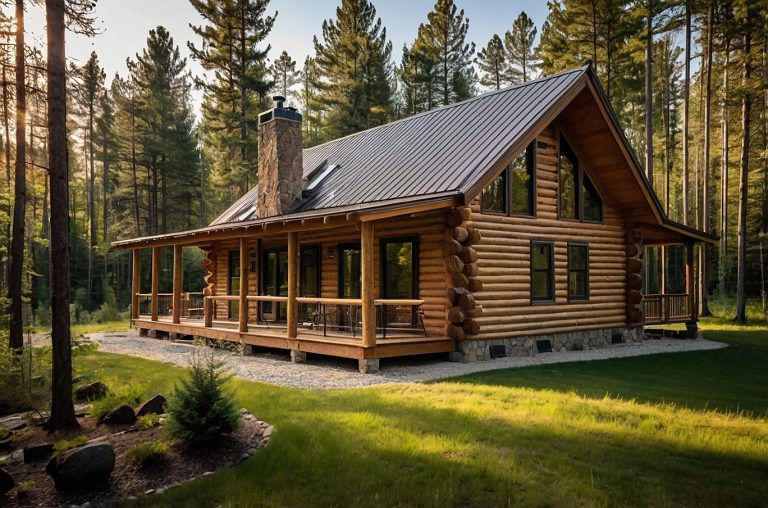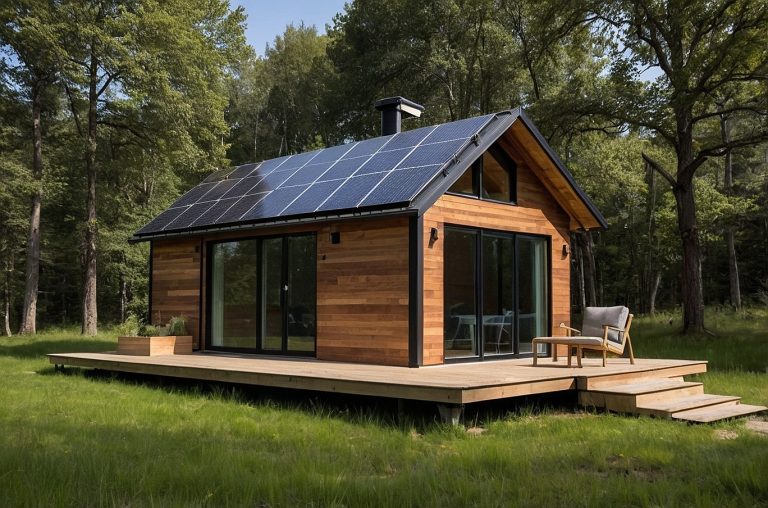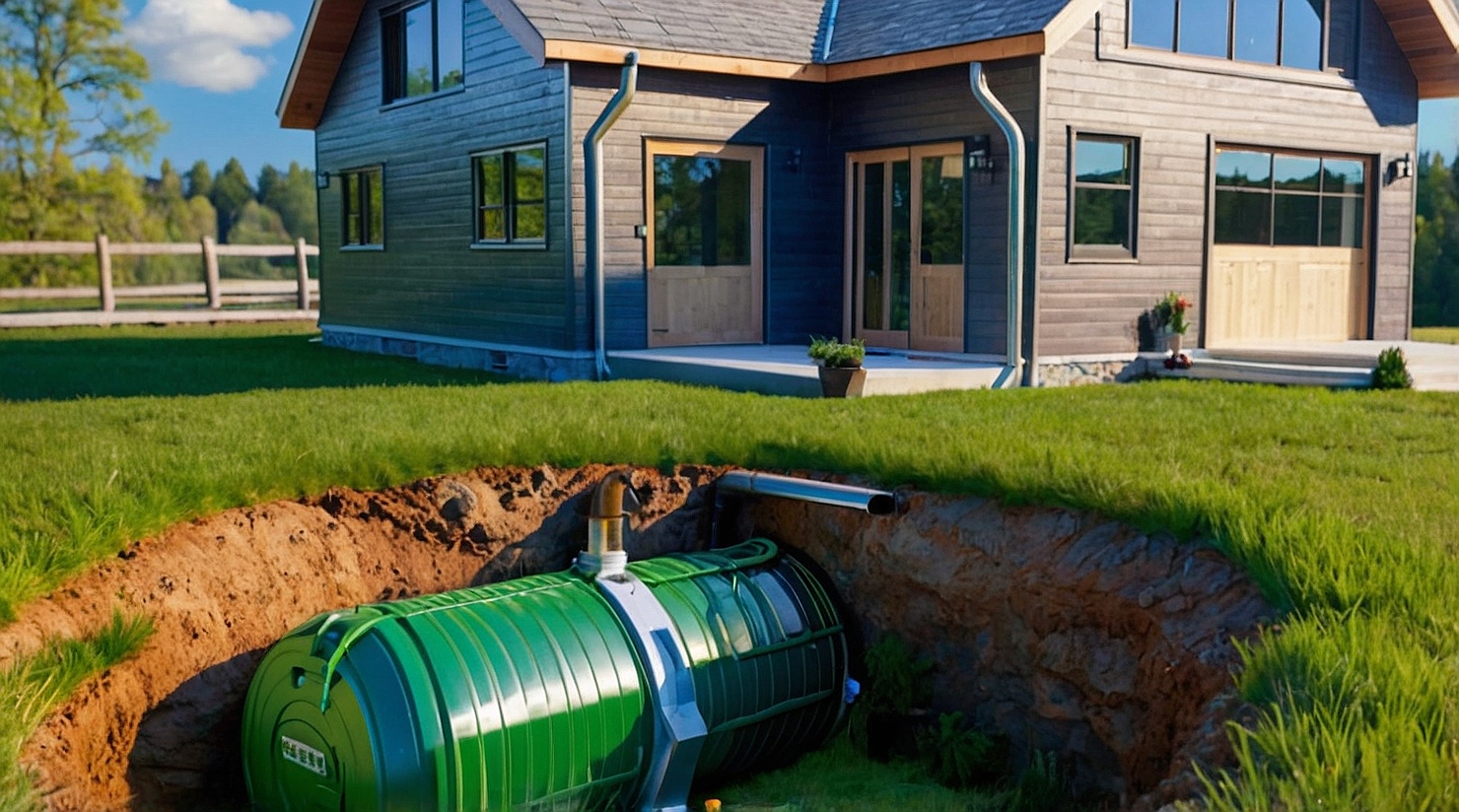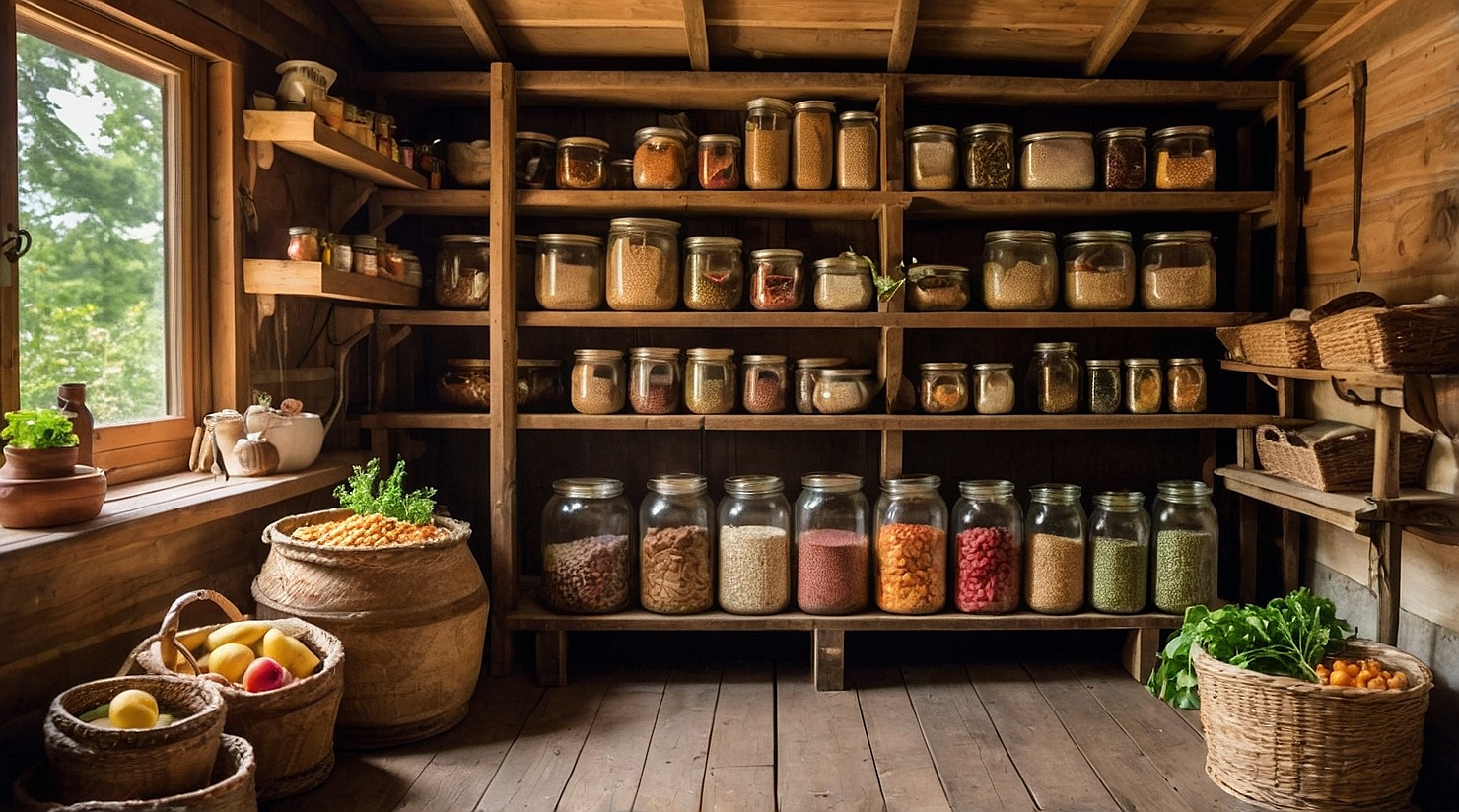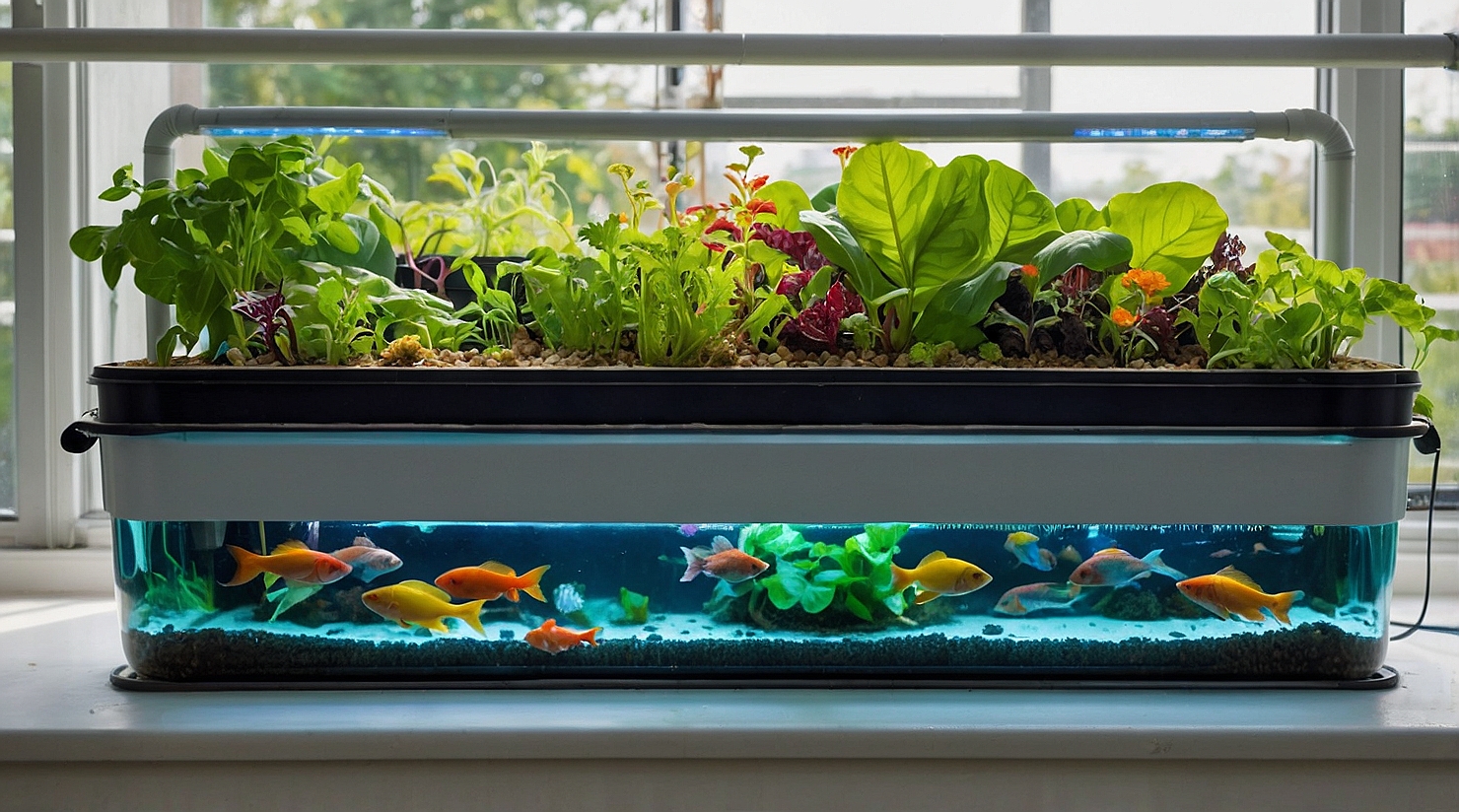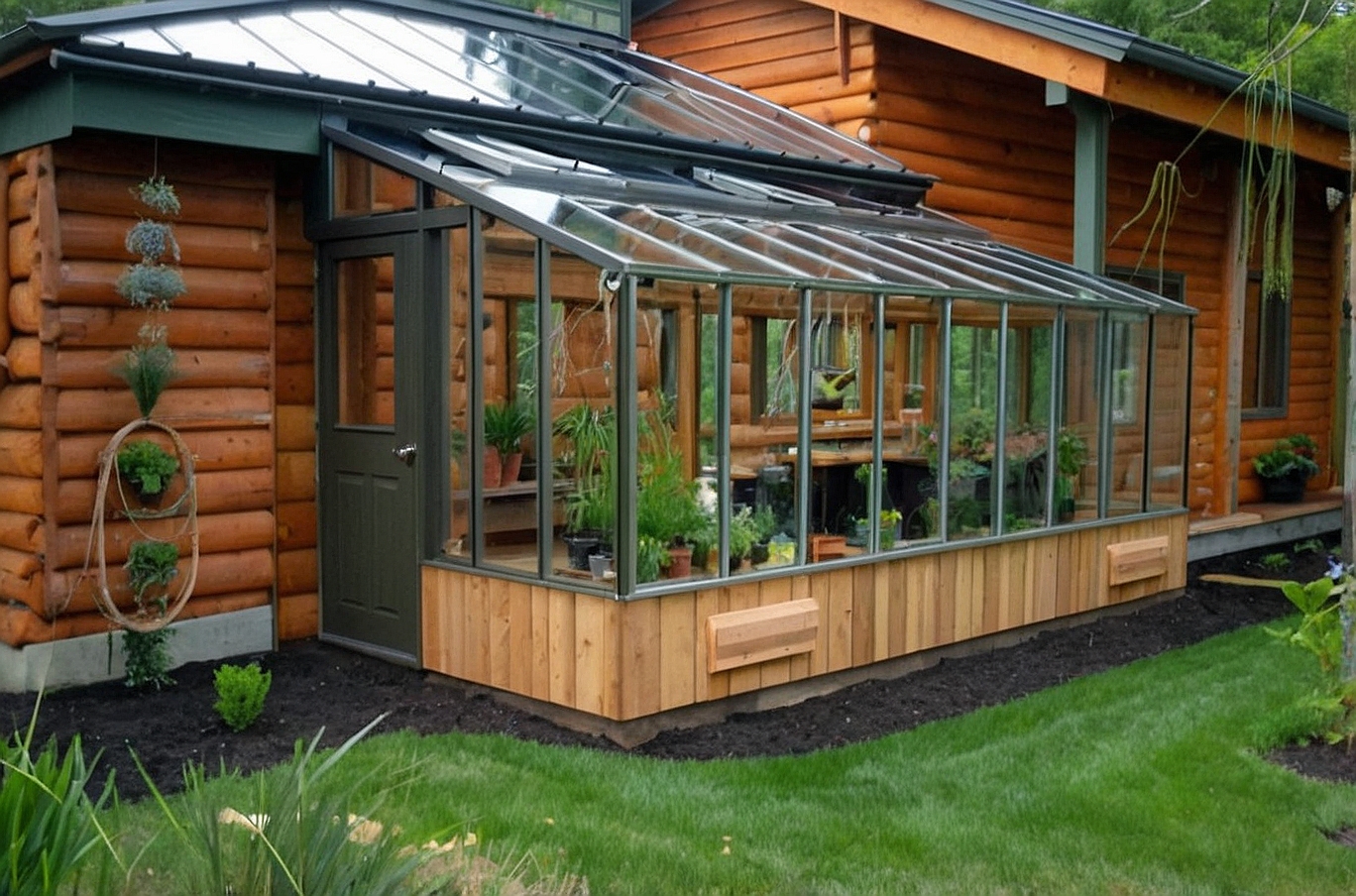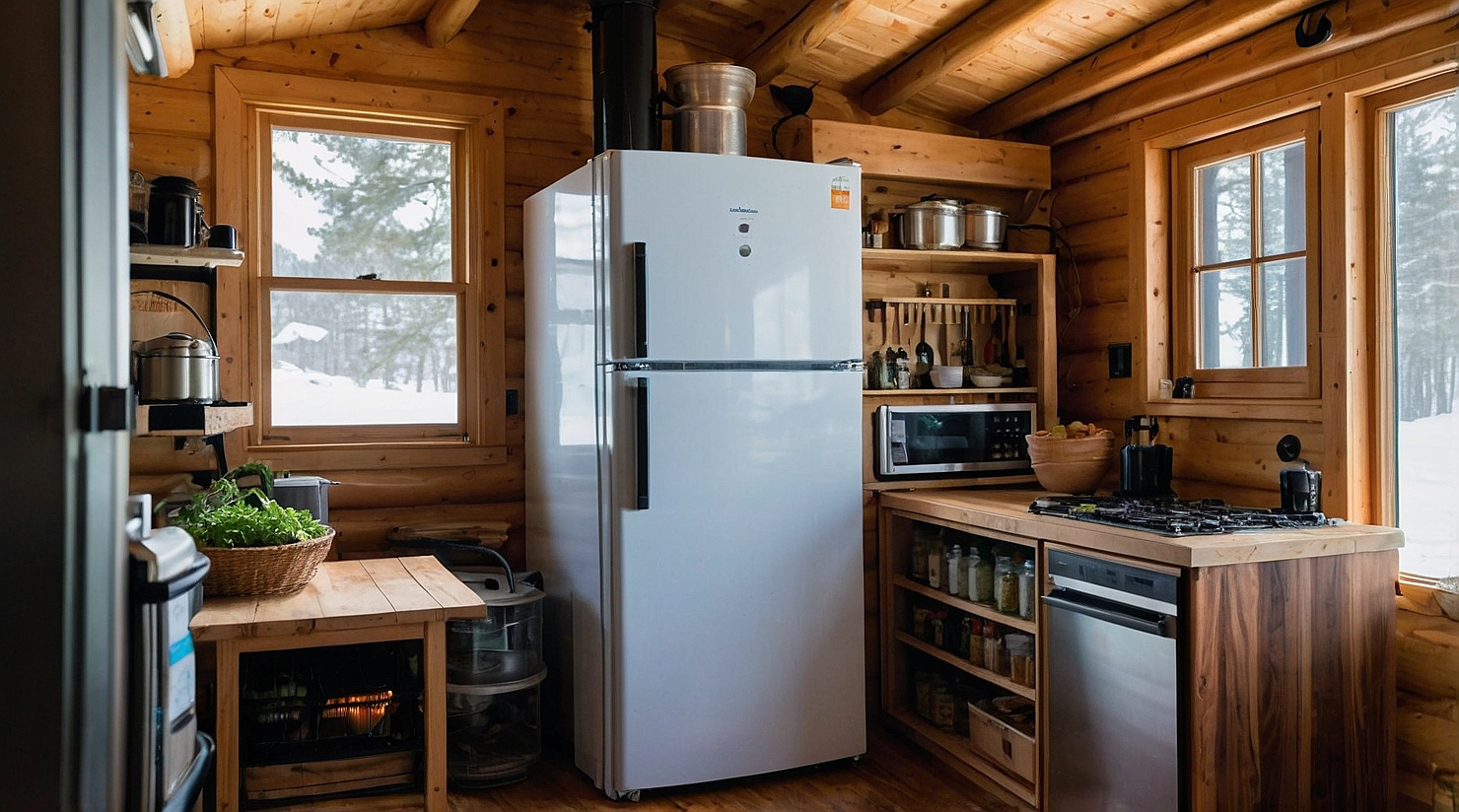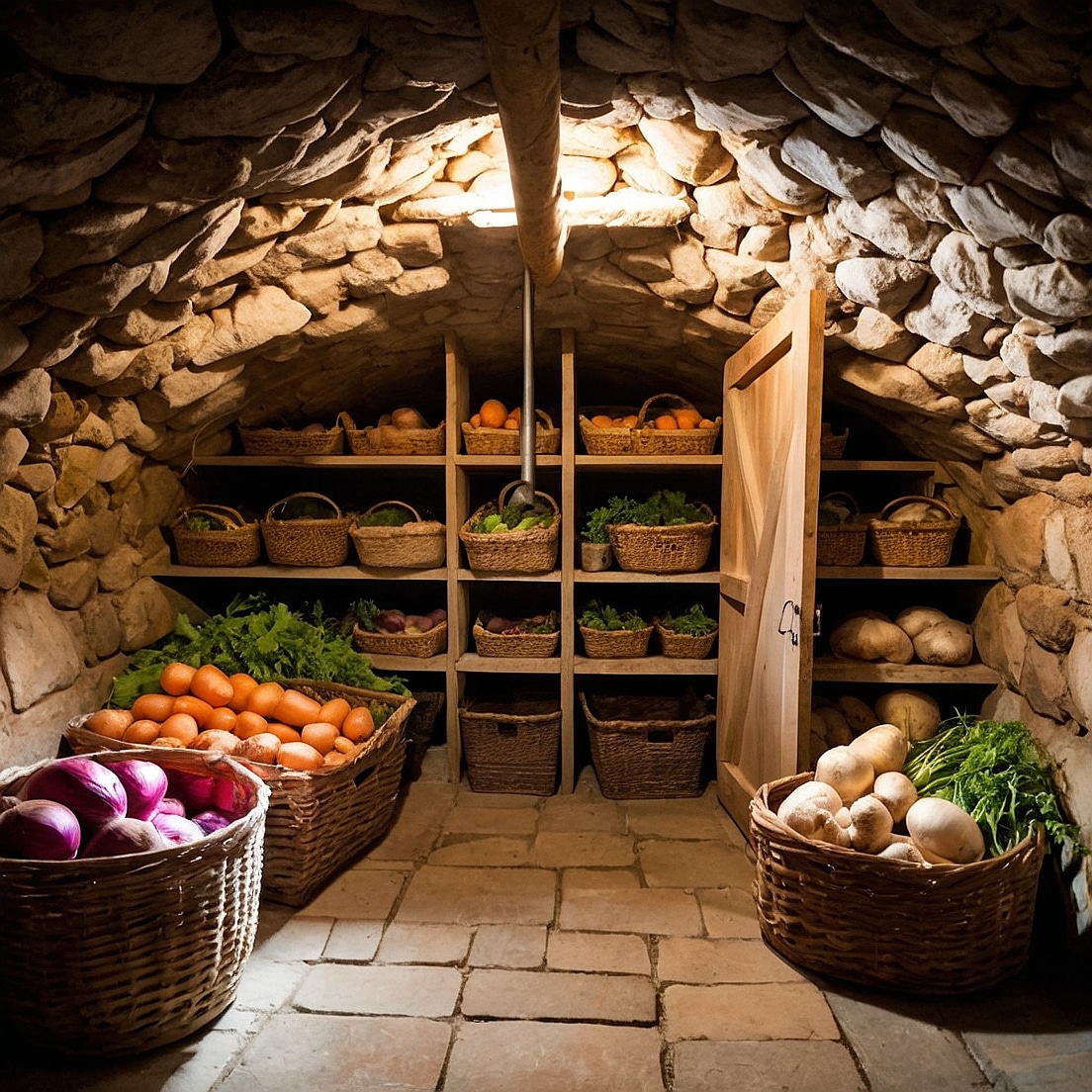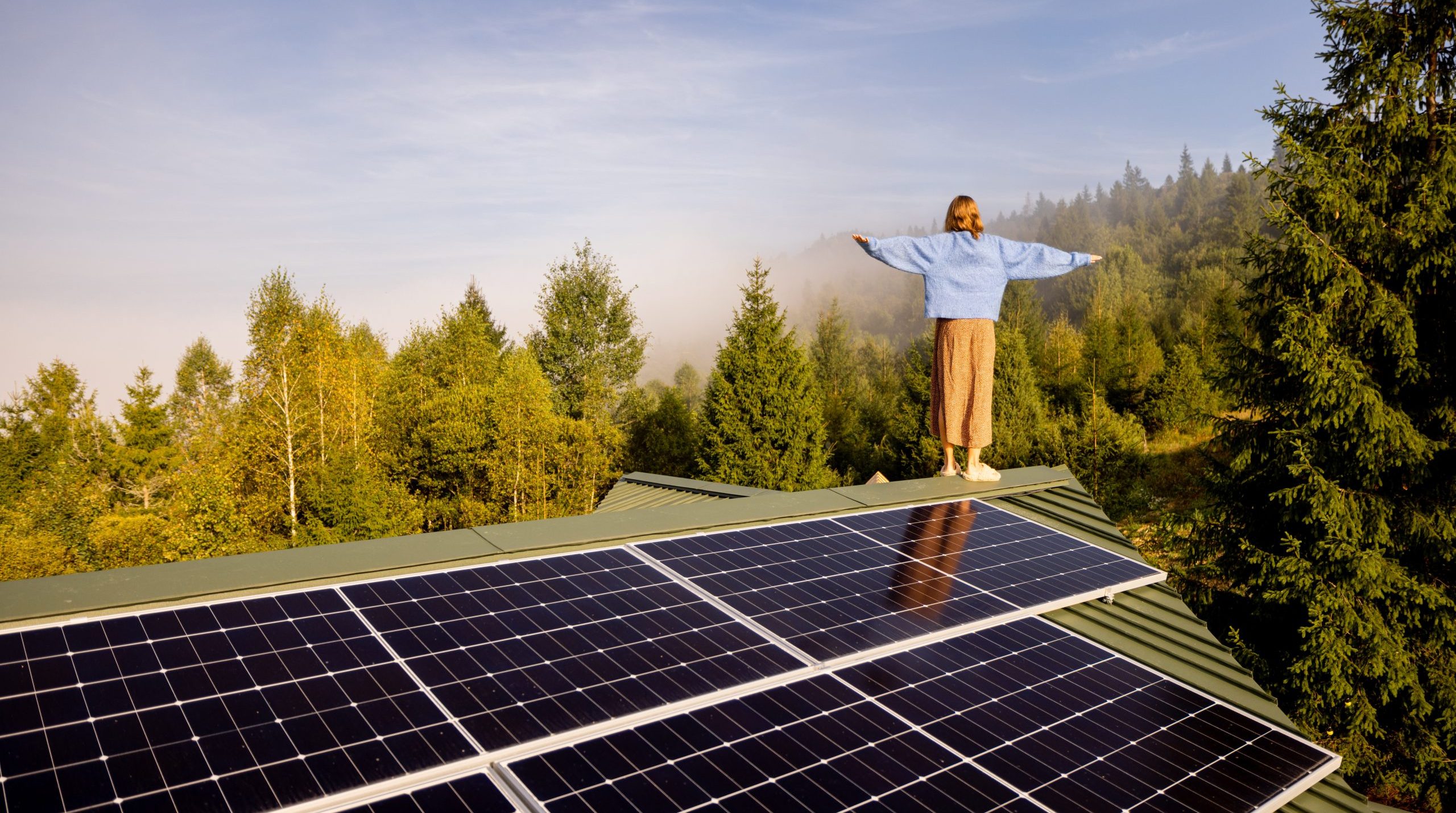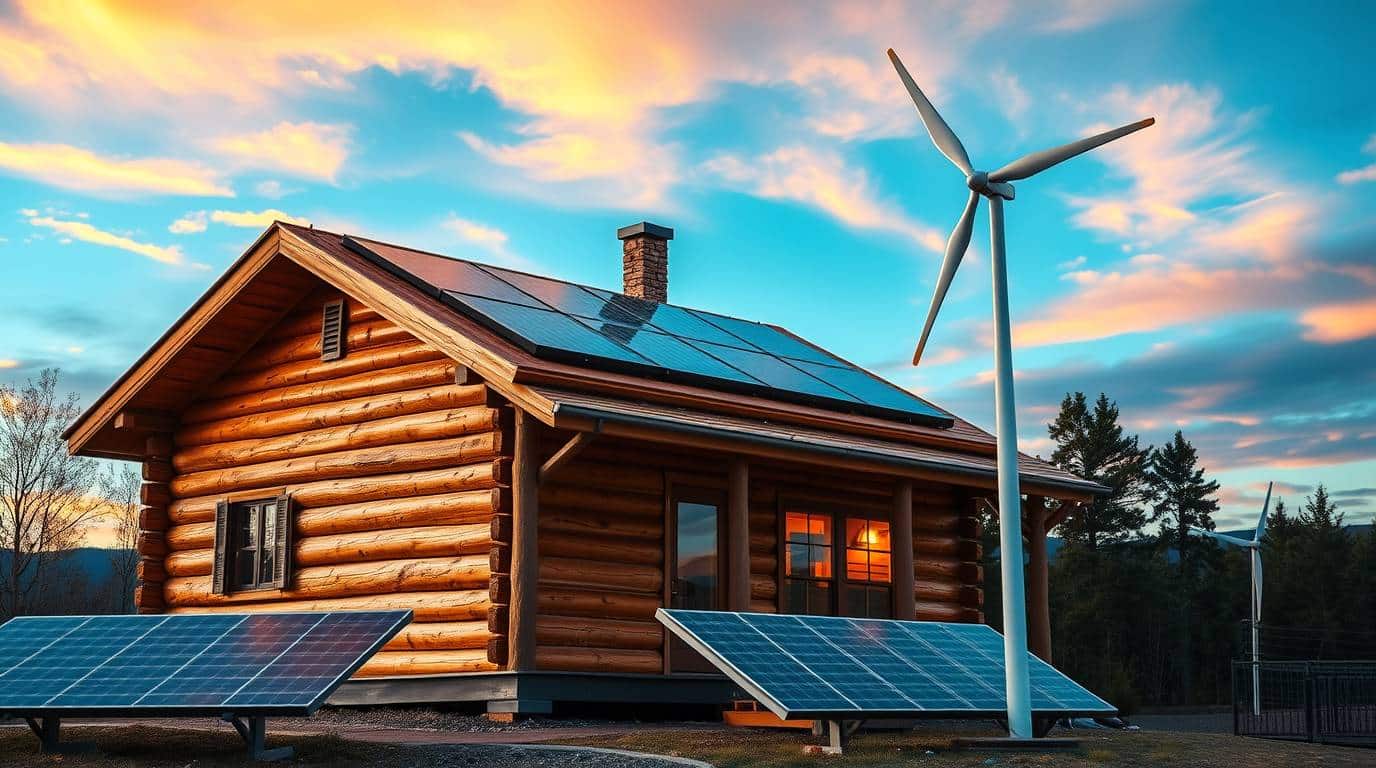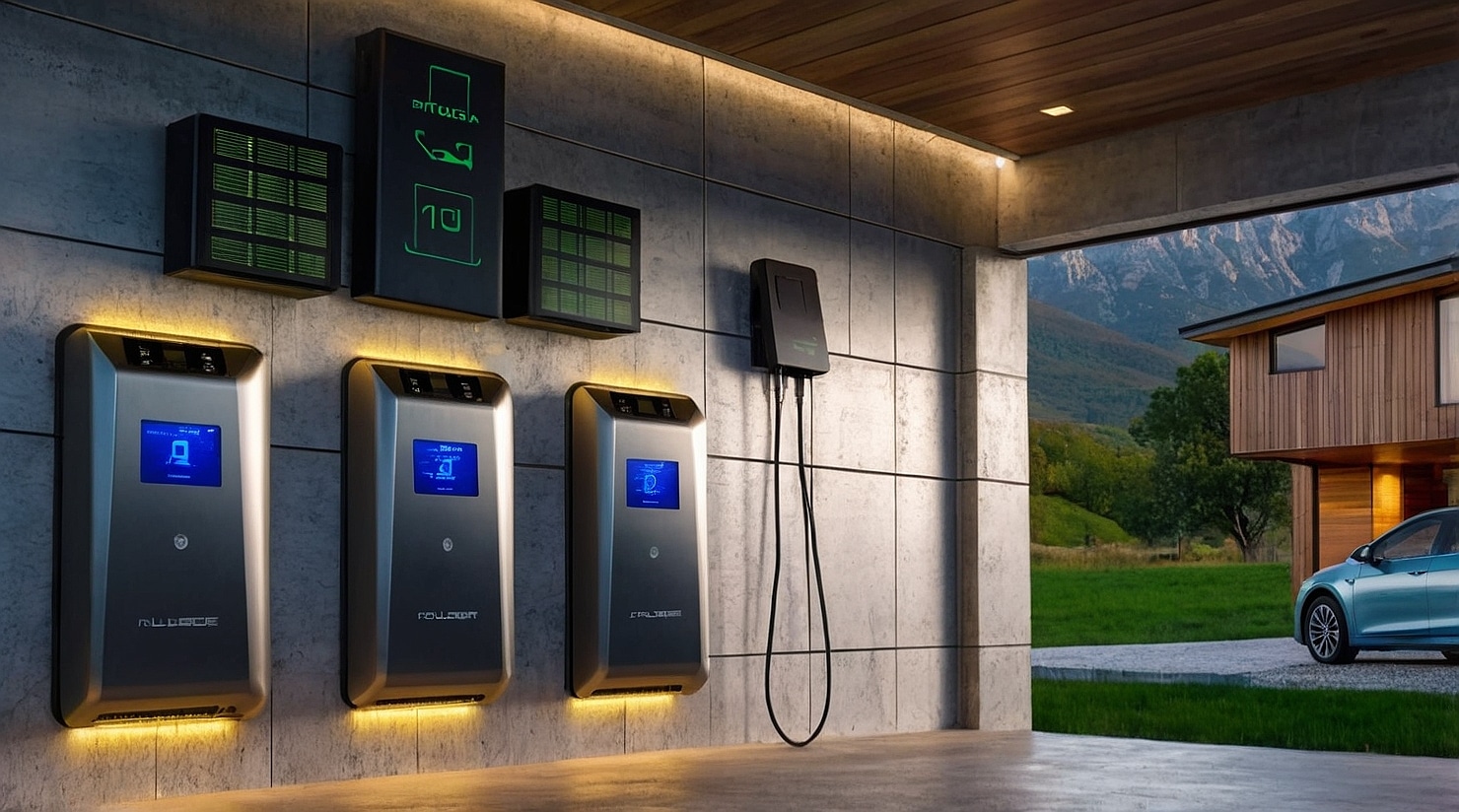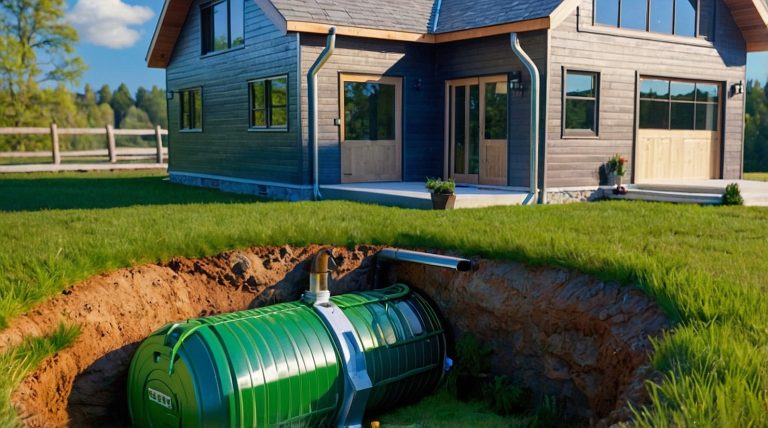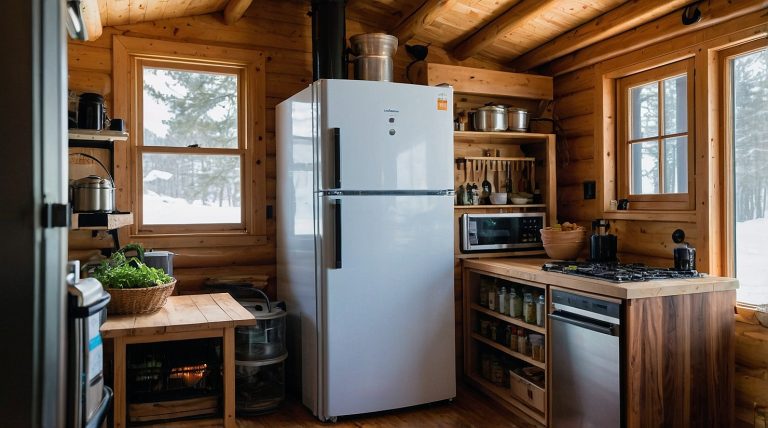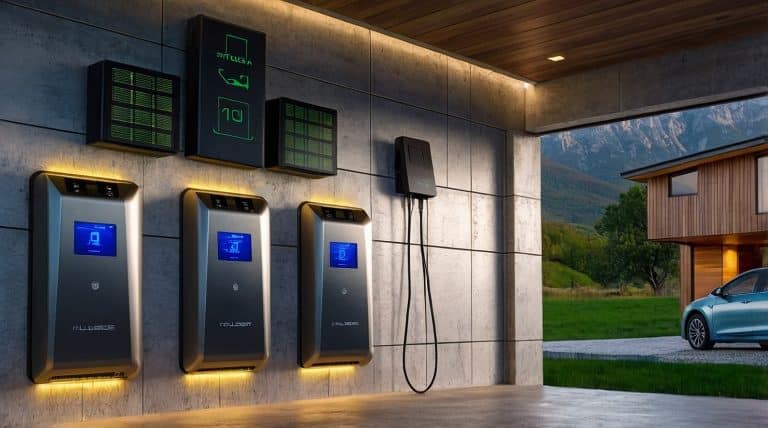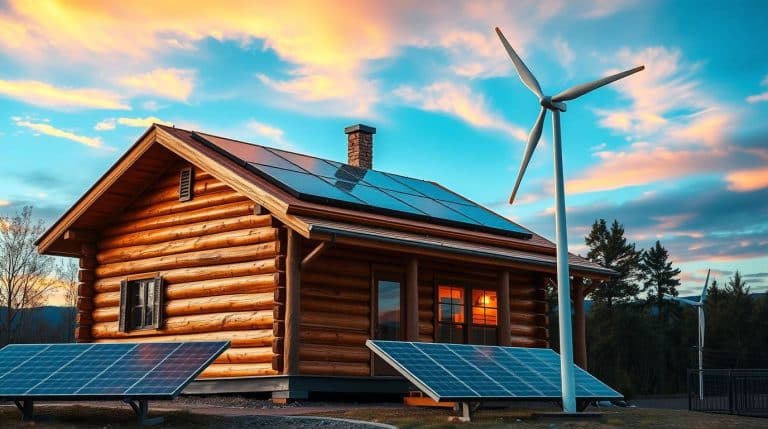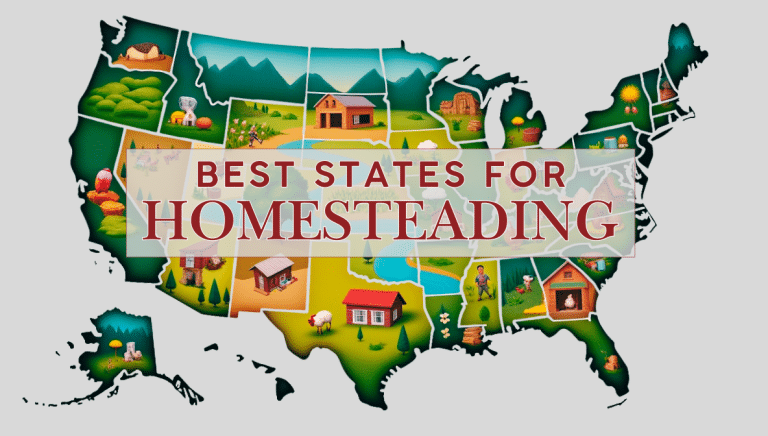9 Steps For How To Live Off Grid: What I Learned Along The Way
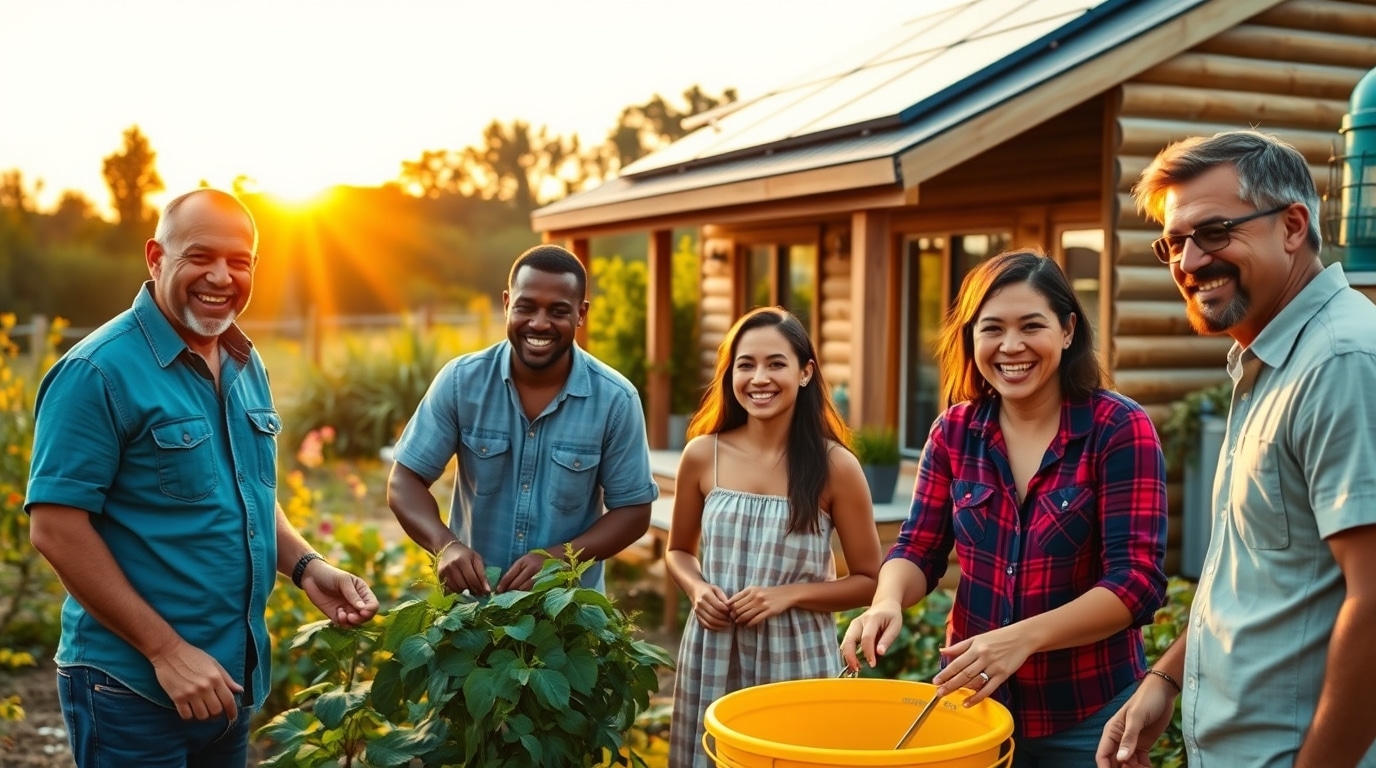
Living off the grid is more than just a trend—it’s a lifestyle shift toward self-sufficiency, sustainability, and freedom from modern constraints. While I’m not off the grid yet, I’m actively pursuing this journey. I started Off Grid and Growing to document my learning process and help others like me who dream of one day making this leap.
In this guide, I’ll share everything I’ve learned about living off the grid so far—from finding the right land and securing water sources to food production, shelter, security, and energy solutions. Whether you’re planning to go fully off-grid or reduce your reliance on public utilities, this guide will help you understand the essentials and point you toward more in-depth resources along the way.
What Living Off The Grid Means
What I have noticed is that many people start their off-grid journey thinking it’s as simple as installing solar panels on a cabin roof – that’s what I thought, too. But what I have learned is that there’s so much more, and I needed to understand what “true” off-grid living meant, and that became my first crucial step. It’s not just about generating your own electricity (though that’s definitely part of it).
Living off the grid means building a life without relying on public utilities like electricity, water, or sewage systems. Instead of plugging into the grid like most people do, you’re using your own sustainable setups—things like solar panels and wind turbines, and collecting your own water. It’s about creating a self-sufficient lifestyle that gives you more control, freedom, and independence from the system.
Step 1: Finding the Right Land for Off Grid Living
Choosing the right location for living off the grid is of the utmost importance. The land you select will impact your access to power, water, and the ability to grow food. A well-chosen site can facilitate a smooth and sustainable off-grid lifestyle, whereas a poor choice can lead to continuous challenges and difficulties.
🔑 Key Factors to Consider:
Climate & Geography – Does the land have adequate sunlight for solar power? Is it prone to flooding or drought?
Water Access – Does it have a natural water source like a well or river, or has good rainfall potential for harvesting?
Legal Considerations – What zoning laws and building codes apply to off-grid homes in the area?
Community vs. Isolation – Do you prefer joining an off grid community for shared resources and support or living off the grid completely independently and secluded?
Energy Potential – You’ll want to choose open, south-facing land for maximum solar energy and opt for elevated or unobstructed areas if you plan to use wind power.
Soil Quality – Look for land with good soil or the potential to improve it with composting. Greenhouses or aquaponics can make food production possible without ideal soil.
Accessibility & Proximity – Consider your distance from medical care, markets, and schools, and ensure reliable road access for emergencies and year-round travel, especially in extreme weather.
If narrowing your options feels overwhelming, don’t worry—we’ve got you covered. Check out our guide, Top 5 Picks: Best States for Homesteading in 2025, for recommendations on where to start your off grid lifestyle.

Step 2: Choosing the Right Off-Grid Shelter
One of the most rewarding parts of an off grid life is creating a home that fits your vision of living off the grid. Whether building from scratch or retrofitting an existing structure, the goal is the same: crafting a comfortable, efficient, and self-contained space.
🏡 Common Off-Grid Housing Options
Tiny Homes – Typically range between (100–600 sq. ft.) and offer a minimalist, energy-efficient lifestyle with low maintenance. Tiny homes require fewer materials than traditional houses, making them affordable for off-grid living.
Shipping Container Homes – These are durable, modular, and customizable, making them a great off-grid option. With proper insulation, solar panels, and rainwater harvesting, they can be self-sufficient in any climate.
Cabins – Offer a rustic, secluded retreat. They can be built with local materials for lower costs and sustainability. Adding solar, wind, and wood stoves makes them a fully off grid cabin option.
Earthship Homes – These self-sufficient, eco-friendly homes are built with natural and recycled materials, such as earth-packed tires. They use renewable energy, water harvesting, and passive solar design for year-round comfort.
Prefabricated Homes – These are built off-site for quick assembly and can be designed for off-grid living with solar panels, composting toilets, and rainwater collection to suit various needs and budgets.
No matter which off-grid home you choose, the key is finding a design that fits your needs, climate, and sustainability goals. Whether it’s a tiny home, cabin, shipping container, Earthship, or prefab house, each option offers unique benefits to help you live efficiently and independently.
Step 3: Securing Water & Waste Collection Systems
If you want to thrive while living off the grid, having multiple water sources is essential for survival. Whether you’re building from scratch or retrofitting, access to clean, reliable water is key—let’s look at the best off-grid water systems.
💧 Water Collection & Purification
Rainwater Harvesting – Is a smart and sustainable way to secure water for off grid living, especially in areas with steady rainfall. With gutters, downspouts, and storage tanks, you can collect, filter, and store water for drinking and daily use, reducing reliance on grid water systems.
Well Water Systems – Drilling a well is a reliable water source for living off the grid, but it requires research and planning. Check water table depth and quality and factor in upfront costs and maintenance for pumps and filters.
Filtration & Purification — Clean water is essential for off-grid living, regardless of the source. Filtration options range from gravity-fed filters to UV and reverse osmosis systems, so choose the best fit for your water source and needs.
🚽 Waste Management & Septic Systems
Composting Toilets – These are a water-free, eco-friendly solution for off-grid waste disposal, turning human waste into nutrient-rich compost for garden soil. Modern designs control odors and require minimal maintenance, making them ideal for self-sufficient living.
Septic Systems – Offer a traditional waste disposal option for living off the grid, treating wastewater on-site. While a septic tank will require space, maintenance, and upfront costs, they provide a long-term, reliable solution for suitable properties.
Recycling and Garbage Disposal – Sustainable off grid living requires reducing waste through recycling and repurposing materials. Look out for our future guide on Off-Grid Waste Management: Practical Solutions for Every Lifestyle.
Step 4: Producing & Storing Your Own Food
Food self-sufficiency is essential for living off the grid, requiring a mix of gardening, hunting, and raising livestock to sustain yourself year-round. Growing your own food with greenhouses, permaculture, or aquaponics ensures a steady supply while hunting and fishing can supplement protein needs.
🌱 Gardening & Permaculture
Raised beds, year-round greenhouses, and permaculture techniques optimize food production, making it easier to grow various crops in different climates. These methods improve soil health, maximize space, and reduce water consumption for a more sustainable lifestyle.
High-calorie crops like potatoes, beans, and squash ensure sustained energy, providing essential nutrients and long-term food security. These staple foods store well, require minimal processing, and help off-grid dwellers stay self-sufficient.
🐟 Aquaponics & Hunting
Aquaponics combines fish farming and plant growth in a closed-loop system, creating a self-sustaining food source that requires less water and space than traditional farming.
Hunting and fishing provide high-protein food sources, helping to reduce reliance on external resources and can supplement food needs in certain areas.
🏡 Food Preservation
Canning, dehydrating, and fermenting extend shelf life, ensuring you have a reliable food supply through seasonal changes and lean months.
Root cellars and off-grid refrigeration keep food fresh year-round, helping off grid dwellers maintain self-sufficiency and energy efficiency.
Step 5: Power Generation & Storage
There’s no getting around it—living off the grid depends on reliable, sustainable energy to keep things running smoothly. The right power system is key to building an efficient and self-sufficient home. Let’s dive into some of the best renewable energy sources to find what works for your property.
⚡ Common Off-Grid Power Solutions
Solar Power – A top choice for living off the grid, providing renewable energy while cutting reliance on the power grid. For maximum efficiency, install south-facing panels in sunny areas and pair them with battery storage for power at night or on cloudy days.
Wind & Hydro Power – These are great off-grid energy sources for areas with steady wind or reliable water flow. These renewable energy systems can supplement or replace solar power year-round, ensuring a consistent power supply.
Battery Storage Systems – Keeps your own power running when renewable sources aren’t available. Regular maintenance—checking connections, charge levels, and controllers—helps extend battery life.
Backup Generators – Even with renewable energy, a backup generator is essential for off-grid living, especially during cloudy days or low wind. Though it requires fuel, it provides a reliable safety net to keep power running when needed.
Step 6: Heating & Cooling Solutions
Maintaining comfort year-round is key to enjoying off grid life. With the right heating and cooling strategies, you can stay warm in winter, cool in summer, and conserve energy while living sustainably.
🔥 Passive Heating & Cooling
Passive design helps regulate temperature in an off grid home without electricity. South-facing windows capture heat, while materials like stone or concrete retain warmth. For cooling, cross-ventilation, natural shade, and overhangs help block excess heat. Look out for our future guide on Passive Heating and Cooling Strategies for Off-Grid Living.
Wood Stoves – A wood stove is a reliable, efficient way to heat an off grid home, often doubling as a cooking surface. Modern designs burn less wood, reduce emissions, and provide consistent, renewable heat in cold climates.
Solar Heating – Solar energy can efficiently heat water and air in an off grid home. Solar hot water systems provide warm water, while solar air heating panels help heat your home in sunny climates.
Insulation and Design – Good insulation is key to living off the grid, keeping homes warm in winter and cool in summer while reducing energy use. Sustainable materials like straw bales, wool, or recycled denim help retain heat, and smart design—like clustering living spaces—boosts efficiency.
Backup Heating Options – Renewable energy is key, but backup heat is vital in extreme weather. Propane heaters aren’t fully sustainable but provide reliable emergency warmth when solar or wood heating falls short.
Step 7: Communication, Safety & Security
Living without the power grid means staying prepared for emergencies is a must. Use solar chargers and hand-crank radios, and keep fire extinguishers, first-aid kits, and firebreaks if in a wildfire-prone area.
📡 Communication
Satellite Internet & Phones – Staying connected while living off the grid can be challenging, but satellite internet and phones provide a reliable way to communicate, even in remote areas. These systems allow access to online resources, emergency services, and off grid communities, helping you stay informed and connected without relying on the power grid or traditional infrastructure.
🛡️ Safety & Security
Security Systems & Fencing – Protecting your off grid property is key to ensuring safety and self-sufficiency. Installing fencing, motion-detection lights, and security cameras can help deter trespassers and wildlife, preventing damage to livestock, gardens, or your off grid cabin. Having a trained guard dog or reinforced entry points in more secluded areas can provide extra peace of mind.
First-Aid & Emergency Preparedness – Without easy access to medical facilities, being prepared for emergencies is critical for off grid dwellers. A fully stocked first-aid kit, emergency supplies, and knowledge of basic medical care can make all the difference.
Step 8: Embracing the Off-Grid Mindset
Living off the grid is more than a lifestyle change—it’s a mental shift requiring resilience, adaptability, and a constant willingness to learn. Unlike grid life, where modern conveniences handle basic needs, off-griders must embrace problem-solving, patience, and independence to navigate challenges like harsh weather, unexpected repairs, and resource management.
🔧 Embracing Self-Sufficiency & Problem-Solving
In an off grid lifestyle, you are responsible for your own energy, water, creating your own food production, and waste disposal. When things go wrong, public utilities have no quick fix, so developing basic construction, mechanical, and survival skills is key.
Learning how systems work, from solar energy to rainwater collection, allows you to be less dependent on external resources and more in control of your daily life.
⏳ Patience & Adaptability
Off-grid life comes with unexpected challenges, whether it’s power supply fluctuations, extreme weather, or equipment failures. Having the right mindset means staying patient and adaptable and finding creative solutions rather than getting frustrated. Over time, you’ll gain confidence in handling problems without relying on mainstream society.
🤝 Building a Support Network
Even though off grid living emphasizes independence, being part of an off grid community can provide valuable knowledge, support, and resource sharing. Connecting with others who share your sustainable lifestyle—whether online or in nearby towns—can help you troubleshoot issues, trade goods, or simply find encouragement when the journey feels tough.
📚 Commitment to Continuous Learning
Living off grid is a lifelong learning process, as technology, climate change, and local regulations constantly evolve. Whether it’s improving energy efficiency, mastering food preservation, or learning about alternative power systems, staying informed ensures your off grid lifestyle remains sustainable and fulfilling.
✅ Final Thought: By cultivating the right mindset and skill set, you’ll not only reduce reliance on public utilities but also thrive in a self-sufficient, sustainable life built on determination, creativity, and freedom.
Step 9: Maintaining Your Off-Grid Systems
⚡ Keeping Your Power & Water Running Smoothly
Once you’ve set up your off grid lifestyle, keeping everything in tip-top shape becomes really important! Regular maintenance will help you avoid any hiccups down the road. Make sure to check your solar panels, battery storage, and water systems periodically so they continue to work well and last longer.
🚽 Taking Care of Waste & Shelter Maintenance
Don’t forget about your septic systems and composting toilets—they need a little love, too, to ensure everything is working smoothly and hygienically. And give your cozy off grid cabin or shelter some attention as well! Regular checks for weatherproofing, insulation, and repairs will help it stay warm and efficient all year round, keeping you comfortable in all seasons.
🛠️ Preventative Maintenance for Long-Term Success
A preventative maintenance schedule is a great way to avoid unexpected and costly breakdowns! It ensures that your power, water, and food systems are always there for you when you need them. Plus, keeping some backup supplies, tools, and spare parts on hand can make fixing things a breeze when the time comes.
🤝 Leaning on Your Off-Grid Community
In an off-grid community, it’s even better! Sharing knowledge and resources with your neighbors can really lighten the load when it comes to maintenance. Whether swapping skills, borrowing tools, or helping with bigger projects, staying proactive and connected enables you to enjoy a smooth and sustainable lifestyle with fewer surprises along the way!
Conclusion – Your Off-Grid Journey Starts Now!
Wow, you did it! You’ve made it through the whole guide, and that’s quite an accomplishment! Learning how to live off the grid is a big adventure. If you’re ready to take that leap toward a more liberated lifestyle while positively impacting our planet, you’ve got some fantastic tools at your fingertips. Embracing off-grid living means getting hands-on, being creative, and caring for our beautiful Earth at the same time. Happy exploring!
Living a life connected to the land and free from all the extra clutter can be truly wonderful! Before you dive into off-grid living, it’s a great idea to take your time to prepare and learn as much as you can. The journey can lead to a lifestyle that’s not just sustainable but also incredibly fulfilling. Let go of the stress of modern life and find joy in a self-sufficient way of living that brings so many rewards.
Embrace the adventure!

